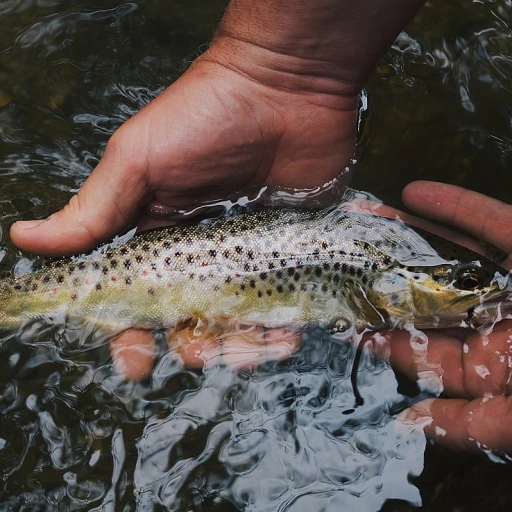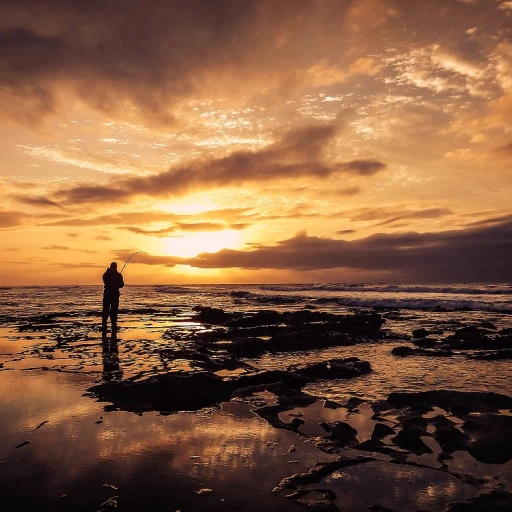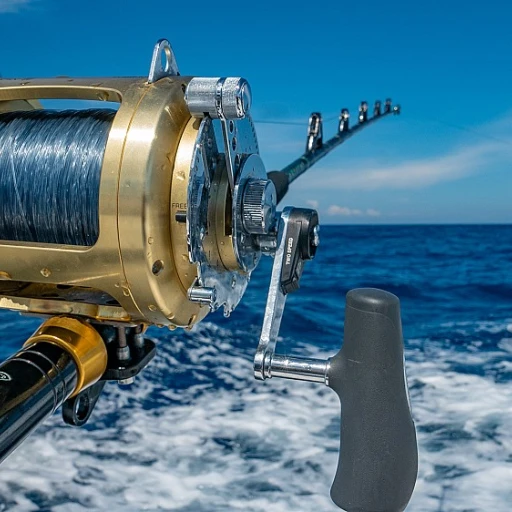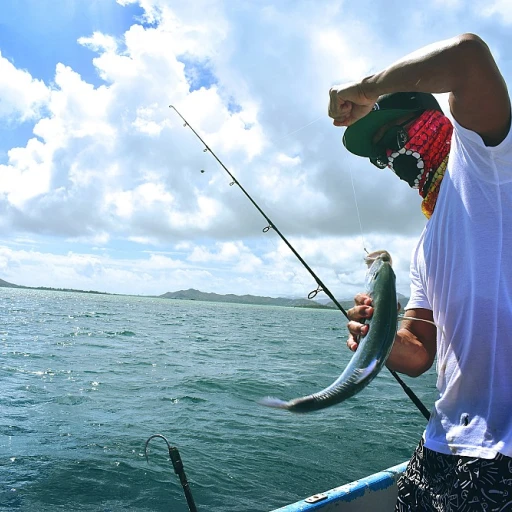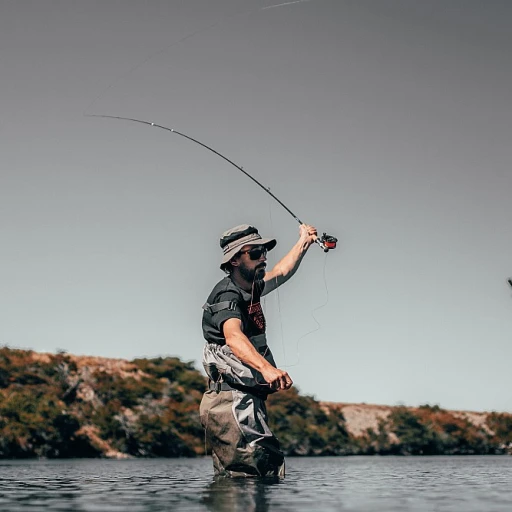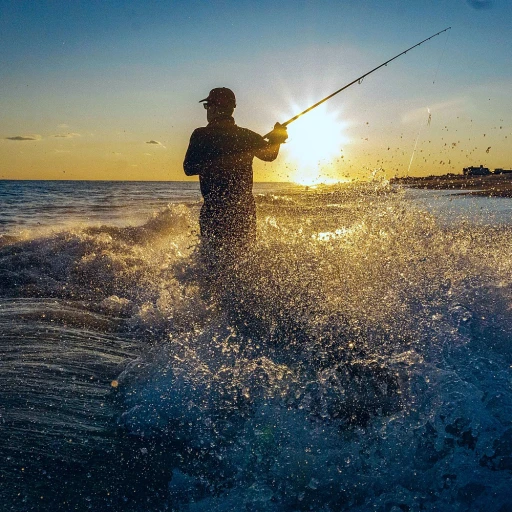
Ingredients you'll need for blackened fish
Must-have spices and herbs
If you're aiming to master the best blackened fish recipe, it starts with the right ingredients. We're diving straight into the essentials. First up on the list are the stars of the show: spices and herbs. You're going to need teaspoon dried thyme, teaspoon dried oregano, and teaspoon dried basil. These fragrant herbs are the foundation of a flavorful blackened seasoning mix.
Heat it up with peppers and powders
Next, it's all about that spicy kick. You'll need cayenne pepper (to give that blackened fish its signature heat) and a generous amount of black pepper. Balance it out with garlic powder and onion powder for depth of flavor. And don't forget the paprika—it adds a subtle smokiness that you can’t do without.
Adding the fats
When it’s time to cook, you need fats that can handle high heat. Think butter and olive oil. These not only prevent sticking but also add a delicious richness to your fish. Remember, the right oil makes all the difference when you’re cooking at high temperatures.
Picking the perfect fish fillets
Don’t overlook the fish itself. Fresh, white fish like sea bass, tilapia, or catfish are excellent choices. These options hold up well to the high heat and bold flavors of the seasoning. And hey, if you're into experimenting with different blackened fish recipes, why not try redfish or snapper? They're also outstanding candidates for blackening.
Stay tuned as we dive into making homemade blackening seasoning, which is essential for achieving that perfect crust. The magic really starts here!
How to make homemade blackening seasoning
What ingredients are needed?
For a stellar blackened fish recipe, you'll need some essential ingredients. Here's what you'll need to gather:
- Fish fillets: White fish like tilapia or catfish works great. Mike Hultquist recommends fresh fillets for the best flavor.
- Butter: Unsalted butter helps to create that rich, flavorful crust.
- Olive oil: It's used alongside butter to prevent burning.
- Blackening seasoning: You can buy pre-made or make your own (see below).
How to make your own blackening seasoning
Crafting homemade blackening seasoning is straightforward and allows you to control the flavor:
- Cajun seasoning: 2 tablespoons
- Paprika: 1 tablespoon
- Onion powder: 1 tablespoon
- Garlic powder: 1 tablespoon
- Black pepper: 1 teaspoon
- Dry oregano: 1 teaspoon
- Dried thyme: 1 teaspoon
- Cayenne pepper: Adjusted to taste for heat levels
Mix all ingredients thoroughly to ensure even seasoning. This blend will be perfect for any blackened fish recipes.
Why it matters
Paul Prudhomme, the legendary chef from New Orleans, popularized the blackened fish cooking method. Its intense flavors are best achieved with the correct blend of spices and a white fish fillet. Using fresh fish and the proper proportions of seasoning can drastically impact your dish's taste and appearance.
The science behind the seasoning
The high heat, combined with oil and butter, allows the seasoning to form a delicious crust, locking in flavor and moisture. This method also significantly reduces cooking time, making it an efficient way to prepare a tasty meal. If you want a comprehensive guide to time your fish cooking perfectly, check out this guide to the fishing calendar.
Step-by-step guide to cooking blackened fish
Preparing your fish fillets
To start, make sure your fish fillets are dry. Pat them down with a paper towel. This helps the seasoning stick better and ensures a nice crust. You can use white fish like tilapia, redfish, or catfish. White fish is perfect for this because it holds the seasoning well.
Applying the blackening seasoning
Mix together your homemade blackening seasoning using the ingredients from our previous section. Spread the seasoning evenly over both sides of the fish fillets. Don't be shy! The more seasoning, the better your blackened fish will taste.
Heating up your cast iron skillet
Heat your cast iron skillet on medium-high heat. This is crucial as you want the skillet to be very hot before you add any oil. Once the skillet is hot, add a mixture of olive oil and butter. The oil prevents the butter from burning and adds richness to the flavor.
Cooking the fillets
Once your skillet is scorching hot, place the seasoned fish fillets in the skillet. Cook each side for about 3 to 4 minutes. You'll see the edges start to blacken. Remember, it’s called blackened fish for a reason – don’t be afraid of a little char!
A tip on flipping
Be gentle when flipping the fish. Use a wide spatula to prevent breaking the fillets. Once flipped, cook the other side for another few minutes. Your kitchen might get a little smoky, so make sure to ventilate well!
Checking for doneness
Your fish fillets are done when they're opaque and flaky. You can check by inserting a fork at an angle and gently twisting. If it flakes easily, you’re good to go!
If you're interested in learning more about some fishing records, give it a read.
Tips from experts on perfecting blackened fish
Paul Prudhomme: The master behind blackened fish
Blackened fish is synonymous with Paul Prudhomme, the renowned chef credited with popularizing this flavorful cooking method. Prudhomme's unique take combined traditional Cajun seasoning with a high-heat cooking technique. The exact inspiration behind his approach came from his desire to recreate the simplicity yet bold flavors of rural Louisiana cuisine.
The importance of seasoning balance
Achieving the perfect blackened fish starts with getting your dry rub right. According to Mike Hultquist, a food blogger specializing in spicy recipes, the ideal blackening seasoning includes a mix of onion powder (1 teaspoon), garlic powder (1 teaspoon), cayenne pepper (1 teaspoon), paprika (1-2 teaspoons), and a pinch each of dried oregano and dried thyme. Getting the right balance ensures your fish packs a punch but isn't overwhelming, making it easy for everyone to enjoy.
Prep time and technique
Timing is everything. According to experts, it takes around 10-15 minutes of prep time to season your fish properly. Coating the fish fillets in melted butter or olive oil before applying the seasoning evenly is crucial. It ensures better adhesion of the rub and helps to cook the fillets perfectly when subjected to medium-high heat, usually for about 2-3 minutes on each side.
He's your cast iron friend
Using a cast iron skillet is highly recommended for achieving that perfect crust. Mike Hultquist insists on using a cast iron skillet because it distributes the heat evenly and can withstand the high temperatures necessary to create that characteristic blackened crust. Aim for a skillet temperature of about 600°F; you should hear a sizzle when the fish hits the pan, indicating it's at the right temperature.
The role of fish type
White fish like red snapper, tilapia, or catfish works best for this. White fish tends to be mild, which contrasts beautifully with the bold seasoning. Be sure to buy fresh fillets and pat them dry before seasoning - moisture can interfere with the cooking process, preventing that perfect blackened crust.
Watch your cooking oil
Butter adds flavor but has a low smoke point. Mixing it with olive oil or canola oil helps raise the smoke point, preventing your fillets from burning too quickly. According to experts, a 1:1 ratio works best, giving you the benefit of both fat types.
Safety tips and common mistakes
Not wearing long sleeves or using a splash guard might result in burns from hot oil splatters. Another common mistake is overcrowding the skillet, which cools down the surface and results in unevenly cooked fish. Avoid these blunders for a perfect outcome.
Using cast iron skillet for blackened fish
Why cast iron is the secret ingredient
The moment you start your blackened fish recipe, your trusty cast iron skillet becomes your best friend. There's a reason culinary experts like Paul Prudhomme and Mike Hultquist swear by it. Cast iron skillets have been around for ages, mainly because they distribute heat evenly and can withstand the high temperatures required for perfect blackening. When you set that skillet on medium high heat and add your chosen oil, usually olive oil or butter, you get a beautiful sear on your fish fillets.
Benefits outweigh the effort
Sure, a cast iron skillet can be a bit heavy and requires some elbow grease to maintain, but the flavor it brings to your cajun blackened fish is worth every minute. Seasoned properly, it imparts a subtle, smoky flavor that's hard to replicate. Let's not forget, those skillets practically last forever, handed down from generation to generation. Not to mention, the more you use it, the better it gets at blackening your favorite white fish with that delicious crusty exterior.
Pro tip on seasoning and maintenance
Keeping that skillet primed for your next cooking adventure is crucial. After every use, clean it gently with water—avoid soap like the plague—and then coat it lightly with your powder of choice, like garlic or onion powder, along with a little oil to keep it seasoned. Consistency in seasoning ensures that perfect sear, bringing out the best of your blackened seasoning mix, whether it's homemade or store-bought.
Experimenting with blackened fish recipes
Cajun blackened fish tacos: a twist to the classic
If you're feeling adventurous, try making cajun blackened fish tacos. All you need is to follow the basic blackened fish recipe, and then transform it into a delicious taco filling. Simply place the cooked blackened fish fillets into soft tortillas, top with shredded lettuce, diced tomatoes, and a spoonful of your favourite salsa. Drizzle with a bit of lime juice and enjoy the fusion of flavors. Use white fish like tilapia or catfish for a tender and juicy bite.
Blackened fish in the air fryer: a modern take
For those who love the convenience of an air fryer, you can make blackened fish in one, and still get that crispy, savory result. Preheat the air fryer to medium high heat, rub the fish fillets with your homemade blackening seasoning, and lightly brush with olive oil. Cook for about 8-10 minutes, flipping halfway through until the fish is cooked through and has a nice char. This method is not only easy but also healthier as it uses less oil.
Blackened fish over rice: a hearty meal
Pair your blackened fish with a bed of fluffy rice for a complete meal. Cook your rice according to the package instructions, and while it's steaming, prepare your blackened fish. Once done, place the fish fillets over the rice, and garnish with a sprinkle of freshly chopped parsley or cilantro. The juices from the fish seep into the rice, adding a wonderful depth of flavor.
Blackened fish with a Cajun twist
For an added layer of flavor, try incorporating different spices into your blackening seasoning. While the classic seasoning involves ingredients like cayenne pepper, black pepper, onion powder, and garlic powder, adding in cajun seasoning or even a teaspoon dried oregano and a teaspoon dried thyme can give it a distinct twist. Mike Hultquist, a renowned spice expert, suggests including a pinch of dried basil teaspoon for a unique touch.
Exploring paul prudhomme's influence
Paul Prudhomme is a big name in the blackened fish world. Known for popularizing the dish in New Orleans, his recipes incorporate rich and bold flavors that have won over hearts across America. Try one of his takes by using a cast iron skillet to cook your fish at high heat, and don't shy away from the butter - it helps to get that perfect blackened crust.
Time to grill: blackened fish on the barbecue
If you love outdoor cooking, try making blackened fish on the grill. Preheat your barbecue to high heat, and make sure the grates are clean and well-oiled to prevent sticking. Coat your fish fillets with blackening seasoning, drizzle with olive oil, and place them directly on the grill. Cook for about 3-4 minutes on each side until the fish is blackened and cooked through. The smoky flavor from the grill adds a new dimension to this classic dish.
Pairing suggestions for blackened fish
Perfect side dishes to bring out the best in blackened fish
When it comes to pairing your blackened fish with sides, the possibilities are endless. However, some side dishes perfectly complement the bold flavors of the blackening seasoning and the crispy exterior of the fish fillets.
One of the classic choices is rice. Whether it's a simple white rice or a more elaborate cajun-style dirty rice, it balances the spiciness of the cajun seasoning while adding a hearty base to your meal. Another favorite is garlic mashed potatoes. The creamy texture and mild flavor of the potatoes work wonders with the intense flavors of blackened fish. Be sure to incorporate some teaspoon garlic powder to the potatoes for an added kick!
Salads and veggies
Fresh and crisp salads are also a great match, especially when you're looking to keep the meal light and healthy. Consider making a salad with mixed greens, cherry tomatoes, and a light citrus vinaigrette. The acidity helps to cut through the richness of the fish and refresh your palate. You can't go wrong with grilled vegetables, either. Throw some zucchini, bell peppers, and asparagus on the grill with a touch of olive oil and black pepper. These veggies not only taste great but add a lovely visual appeal to your plate.
Experiment with some bold pairings
If you're feeling adventurous, try pairing your blackened fish with something a bit bolder, like a corn and black bean salsa. The sweetness of the corn and the earthiness of the black beans provide a contrasting texture and flavor, making every bite a new experience. Or, how about a sweet potato hash? The natural sweetness of the sweet potatoes enhances the spices in the blackening seasoning, creating a delightful balance.
Favorite sauces and dips
Don't forget the sauces! A good tartar sauce can never go wrong, but for a more unique twist, try a cajun remoulade or a mango salsa. These sauces add an extra layer of flavor and keep things interesting. If you want to stick with something simple, a squeeze of lemon or lime can brighten up the whole dish instantly.
Remember, the key to the perfect pairing is balance. Choose sides that will balance out the spiciness of the fish and provide a variety of textures. This way, every bite is as delightful as the first, making your blackened fish meal truly unforgettable.
Common mistakes to avoid when making blackened fish
Watch your seasoning amounts
Adding too much blackened seasoning can overpower the delicate flavor of your fish. According to Mike Hultquist, a well-known culinary expert, balancing spices like paprika, cayenne pepper, and black pepper is key to achieving that perfect cajun flavor without overdoing it. Remember, less is sometimes more when it comes to seasoning.
Heat management is crucial
Cooking over medium high heat is essential, but if you push it too high, you risk burning your fish fillets. A cast iron skillet works best for maintaining a consistent temperature. Make sure to preheat the skillet and add a bit of olive oil or butter before placing your fish. This ensures an even blackening without excessive charring.
Don't forget to preheat your skillet
A common mistake many home cooks make is not allowing their cast iron skillet to heat properly. You want it hot, but not smoking. A good rule of thumb is to preheat your skillet on medium high heat for about 10 minutes before adding oil. This helps achieve that signature blackened crust.
The wrong kind of fish
Not all fish are created equal when it comes to blackening. Opt for white fish fillets such as tilapia or snapper. These types allow the seasoning to truly shine while keeping the texture nice and flaky. Avoid oily fish as they might turn out too greasy when cooked in a cast iron skillet.
Don't skim on seasoning ingredients
Homemade blackening seasoning can make a huge difference. Stick to fresh ingredients like dried oregano, basil, thyme, and onion powder. Ground black pepper and garlic powder teaspoon by teaspoon are important elements that can elevate your fish recipes to professional levels.
Over flipping your fish
Resist the urge to constantly flip your fish fillets. Allow ample time for each side to cook before flipping, roughly 3-4 minutes per side. This ensures a perfect blackened crust forms on both sides without sticking to the pan. According to Paul Prudhomme, constantly flipping the fish disrupts the even cooking process and can cause it to fall apart.
Experimenting with cooking methods
While a cast iron skillet is traditional, using an air fryer can also yield excellent results for blackened fish. Just season your fish, spray with olive oil, and cook at 400°F for about 7-8 minutes. This method offers a healthier alternative without sacrificing the flavorful crust.

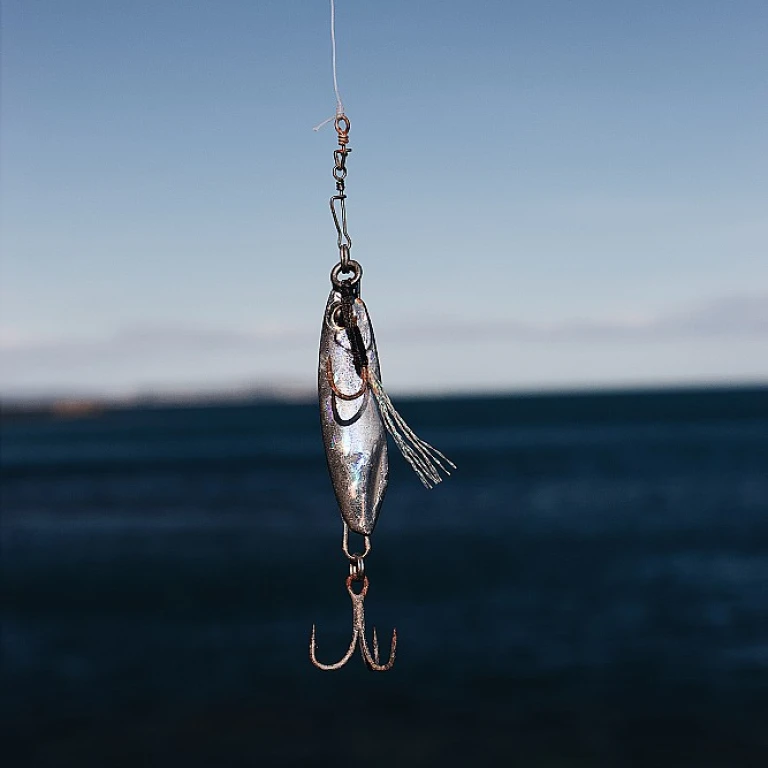


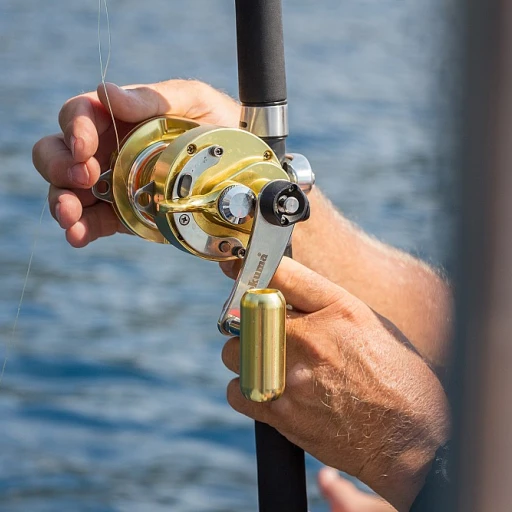
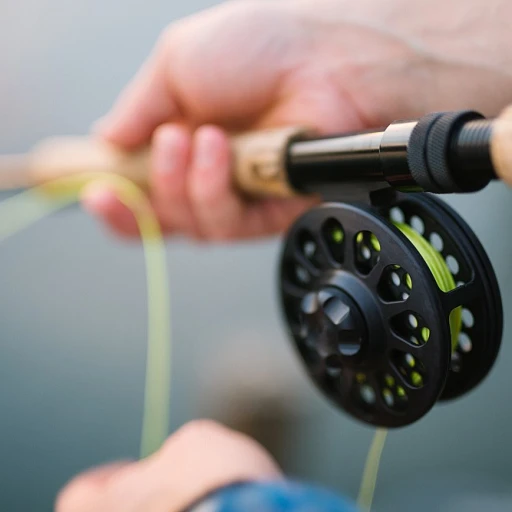
-large-teaser.webp)
